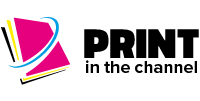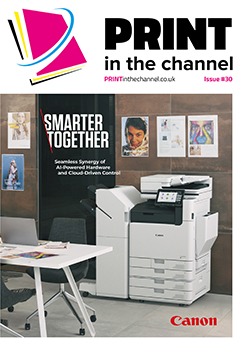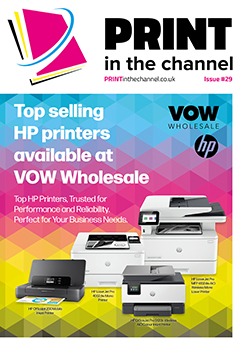Office printers are becoming increasingly sophisticated, with access to cloud storage, Wi-Fi connectivity and mobile printing, which is great for end users, but also leaves them open to cybersecurity threats, which is why there must be an emphasis on enhancing security.
Cybercrime is one of the biggest threats to businesses today. By 2025, the cost of cybercrime for businesses is predicted to reach $10.5 trillion, up from $8 trillion in 2023, according to eSentire & Cybersecurity Ventures’ 2022 Official Cybercrime Report.
But despite this, many businesses are overlooking and neglecting high-risk areas such as print security, inadvertently leaving them subject to attacks.
“Security is a top priority for many businesses, but the speed at which the cybersecurity landscape is evolving and the increasing sophistication of cyberattacks means a detailed understanding of where some of the biggest risks are coming from is limited among many CISOs and IT managers,” says Quentyn Taylor, senior director – Information Security, Product Security and Global Response at Canon.
“In fact, according to research from Quocirca in its Print Security Landscape 2023, printed documents represent 27% of IT security incidents, yet print security is low on the agenda when compared to other elements of the technology stack like cloud, email and public networks.
“Despite this, 61% of organisations have experienced data losses due to unsecure printing practices over the past year. At a time where cyberattacks are on the rise, and will become increasingly common, it is critical that businesses do not overlook the importance of securing the print environment as a crucial building block for a robust security infrastructure.”
Impact of hybrid working
Quentyn says that to address the evolving security challenges posed by people working in the office and remotely, businesses need to implement additional measures to safeguard their networks and the sensitive information that travels on them.
“This paradigm shift in work dynamics calls for a more robust approach to print security,” he says. “Organisations must adapt to the reality that sensitive documents may be accessed and printed on various remote devices that do not have the same level of protection as the wider business network. Consequently, security leaders are now tasked with reimagining their strategies, implementing measures to secure documents at every stage of their lifecycle, whether printed or electronic and regardless of the device used or where it is located.
“It’s imperative for organisations that don’t currently have robust measures in place to safeguard their documents sooner rather than later. Third-party providers can play a significant role in enhancing secure practices around remote printing devices. While many organisations already invest in third party services, only 32% are satisfied with their security offerings, according to Quocirca. As such, it is crucial for organisations to work with vendors that prioritise security from the ground up, ensuring it is implemented at every stage of the printing process.
“Businesses should aim for services that offer a comprehensive, 360-degree approach to security, covering devices, software, networks and cloud-based services. Many lean on third-party vendors that specialise in secure information management, to help ensure that sensitive documents are protected throughout their lifecycle, from storage and transmission to printing and disposal.
“Leveraging external expertise can help strengthen organisational print security measures, promote a holistic approach to print security and ensure a culture of secure practices is in place. In doing so, businesses can mitigate cyberattacks by safeguarding the confidentiality and integrity of their printed materials, particularly when using remote end devices.”
Proactive print security
Rob Smith, business development manager, Digital Offerings, Xerox EMEA Channel Software & Services, agrees that external expertise can help. “In most cases, when we discuss security in our industry, the typical starting point is to consider print management (PM) solutions and how we can control printing activity,” he says. “But this is a partial solution, and many other areas, potentially posing a higher risk, cannot be resolved with a PM solution.
“PM solutions will help to monitor user print activity, but they are not designed to prevent ransomware attackers from directly gaining access to the network via the various network ports on a standard MFD. Nor do they allow us to track who a document is shared with or set an expiry date for how long that document remains available.
“Through Xerox’s exclusive range of technology, tools and services, Xerox partners can provide proactive print security audit services across all devices, users and documents. The process starts by helping the customer create a unique policy for how each technology is configured and managed, followed by how print and document sharing is facilitated and reported. Once the policy is applied, through our tools, the partner can monitor all areas and receive immediate notification of any breach of the policy, which then expedites rectifying the breach in accordance with the policy.”
Multi-layered solutions
Deyon Antoine, product marketing manager at Toshiba Tec, adds that buyers should consider multi-layered print security solutions. “The hybrid work environment has expanded the exploitable attack surface, and multiple layers of security are required to protect it from external and internal threats,” he says. “Implementing secure print solutions is an easy way to ensure neither network data nor printed documents fall into the wrong hands.”
Deyon adds that some of the advantages of this are:
● Provides protection from an attack that comes through email attachments, files, adware, links, apps and more
● DNS-level security safeguards against threats arising at the network level
● Layered security can also protect IT systems from network-level threats and data breaches
● Data encryption provides security of information across a network
● Access security can provide security against unauthorised device access, print release via card authentication or biometrics
● Anti-malware protects against malicious scripts being run on the device
● Device security encrypts data on the machine and prevents access to hard drive data.
But there are some challenges that can be encountered with this. “Securing a diverse printer fleet that may include multiple brands, legacy devices and a patchwork of software and drivers can be challenging,” he says. “The risk is exacerbated in today’s distributed hybrid work environments, where MFPs are shared among more users, sometimes in settings that involve more than one company or are away from standard controllable locations, such as in an employee’s home.
“A multi-vendor environment may not incorporate consistent security controls, and a fragmented approach to cloud printing may create further security risks around access and authentication.”
Deyon says there are various things resellers should be discussing with customers in terms of print security. “Things like managed print services (MPS), as closely monitored print services are likely to identify any problems with data being breached,” he says. “Also managed IT services, as auditing of software will ensure all software is up to date and vulnerabilities are identified and patched. Moving from on-premise to cloud solutions will ensure software is constantly up to date.
“Also moving to a more secure single vendor print fleet, as security features will be similar across all print devices, older devices will most probably have older security tech and not be as secure.”
Number one challenge
Terry Caulfield, chief commercial officer at Brother UK, says that maintaining and securing IT systems is the number one challenge facing IT decision makers, according to the company’s latest industry polling with market research agency Savanta, where 1,255 IT decision markers in small- to medium-sized businesses in the UK, Germany, France, Spain and Italy were polled in an online survey in July and August. “And the shift to supporting hybrid working patterns is driving the issue, especially here in the UK,” he says.
“The problem is largely due to the expanding surface layer of firms’ IT infrastructure, as in hub-and-spoke networks, which can make them more vulnerable to would-be attackers, typically distributed denial-of-service attacks. Deploying a strong password policy and ensuring software and device firmware are kept up to date are important first line defenses. However, the foundation for a solid, secure network must come from continuous employee education to threat awareness, and ensuring software and hardware are kept fully up to date.
“Security will continue to be high on the agenda for business leaders because of the costs involved – the latest government Cyber Crime Survey estimates that each security breach is setting a medium-sized or large business back an average of £4,960.
“The result is more organisations moving towards zero trust methodologies and employing MPS to boost control and oversight of their decentralised networks, implementing solutions such as Kofax Control Suite and Printix Cloud to add additional layers of print security and control. Brother network print devices also come equipped with security benefits such as automatic intrusion detection, print release authentication and SSL data encryption.”
Future
Terry adds that change is coming in 2024 with the introduction of UK Product Security and Telecommunications Infrastructure legislation (PSTI). “This is specifically designed to improve device security, addressing the issue of weak default passwords within IoT connectable devices,” he says.
“This is a vital change and one that presents resellers with an opportunity to engage with their customers to ensure their print estate is compliant. This in turn means working with vendors who can supply a wide range of PSTI compliant products to meet the needs of office and hybrid staff.”
Deyon adds that as businesses look to secure their data and not fall foul of GDPR laws, they will look to several solutions to help with their print security in 2024. “This includes MFA, cloud authentication and single sign-on,” he says. “There will also be more buy-in to the security benefits of MPS as well as managed IT services, as auditing of software will ensure all software is up to date. There will also be a rise in incident management and major incident management procedures, data separation and adoption of zero trust programs.”
Rob adds that he expects the uptake of security options – from Xerox and wider – will continue to grow in 2024. “For a typical MFD reseller, we know that 85% of their customers buy five or fewer devices. For those purchasing two or three devices, trying to convince them of the benefits of confidential/follow-me style printing or a report on who printed which document is not an easy sell,” he says. “But ask those same customers if they wish to ensure they are not exposed to undue risk across their devices, users, and documents; they will want to know more.”










